
Overview of Cloud Storage and Traditional Storage
Definition of Cloud Storage
Cloud storage refers to the practice of storing data on remote servers accessed via the internet, rather than on local hard drives or external storage devices. This service allows users to save and retrieve data from anywhere with an internet connection. Popular cloud storage solutions include Google Drive, Dropbox, and Microsoft OneDrive, which offer various features such as automatic backups and file sharing capabilities.
Definition of Traditional Storage
Traditional storage typically involves saving data on physical media such as hard drives, USB flash drives, or external hard drives. This method is often more tangible and can be perceived as a safer option since users have direct physical control over their data. However, traditional storage can pose risks, including hardware failures, data loss, or damage due to physical incidents.
Key Differences between Cloud and Traditional Storage
The differences between cloud and traditional storage can significantly influence the choice of solutions for individuals and businesses. Key contrasts include:
- Accessibility: Cloud storage allows for remote access from any device, while traditional storage is often limited to specific devices.
- Maintenance: Cloud services manage hardware and software, reducing the maintenance burden on users. In contrast, traditional storage requires ongoing management and upgrades.
- Cost Structure: Cloud storage typically operates on a subscription model, while traditional storage usually involves one-time hardware purchases.
Understanding these differences can enhance decision-making in storage solutions, particularly for those navigating the evolving technological landscape.
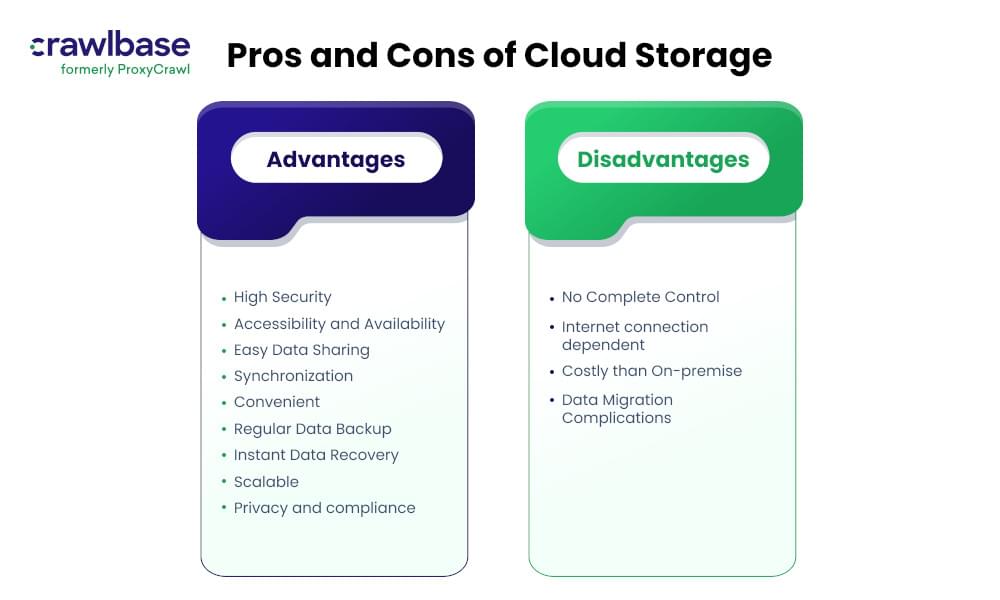
Pros and Cons of Cloud Storage
Advantages of Cloud Storage
Cloud storage comes with a variety of benefits that appeal to both individuals and businesses alike. One of the most appreciated aspects is its accessibility. With cloud storage, files can be accessed from any device connected to the internet. Imagine being able to retrieve an important document on your phone while running errands!
Other key advantages include:
- Automatic Backups: Many cloud services offer automatic backup features, minimizing the risk of data loss.
- Scalability: Users can easily increase or decrease their storage capacity based on changing needs.
- Collaboration: Tools within cloud storage platforms often facilitate easy file sharing and collaboration among team members.
Disadvantages of Cloud Storage
However, cloud storage is not without its downsides. A prevalent concern is security. Since data is stored online, it could be vulnerable to hacking or data breaches.
Additionally, consider the following drawbacks:
- Dependence on Internet: Accessing files requires a stable internet connection, which can be a limitation in remote areas.
- Cost Over Time: While it may offer initial savings, subscription fees can accumulate, leading to higher long-term costs.
Balancing these pros and cons is essential when considering whether cloud storage is the right fit for your needs.

Pros and Cons of Traditional Storage
Advantages of Traditional Storage
Traditional storage solutions offer several compelling advantages that can be appealing in specific contexts. One major benefit is control; users have physical custody of their data, which can provide peace of mind. For instance, many users prefer keeping sensitive information on an external hard drive locked away in a safe.
Key advantages include:
- No Internet Dependence: Data can be accessed anytime, regardless of internet availability.
- Fewer Security Concerns: With local storage, many feel that risks of hacking or unauthorized access are reduced since data isn’t stored online.
- Cost-Effective for Long Term: While the upfront cost can be higher, having a local storage device may save money over time without recurring fees.
Disadvantages of Traditional Storage
Despite these benefits, traditional storage has its downsides. A prominent concern is vulnerability to physical damage. Imagine losing all your family photos because a water leak damaged your external hard drive!
Other notable disadvantages to consider are:
- Limited Accessibility: Accessing files requires being at the physical location of the storage device.
- Maintenance and Upkeep: Users need to manage hardware failures and updates, which can be time-consuming and burdensome.
Overall, while traditional storage solutions can be beneficial, evaluating these pros and cons will help decide if they meet your specific storage needs effectively.
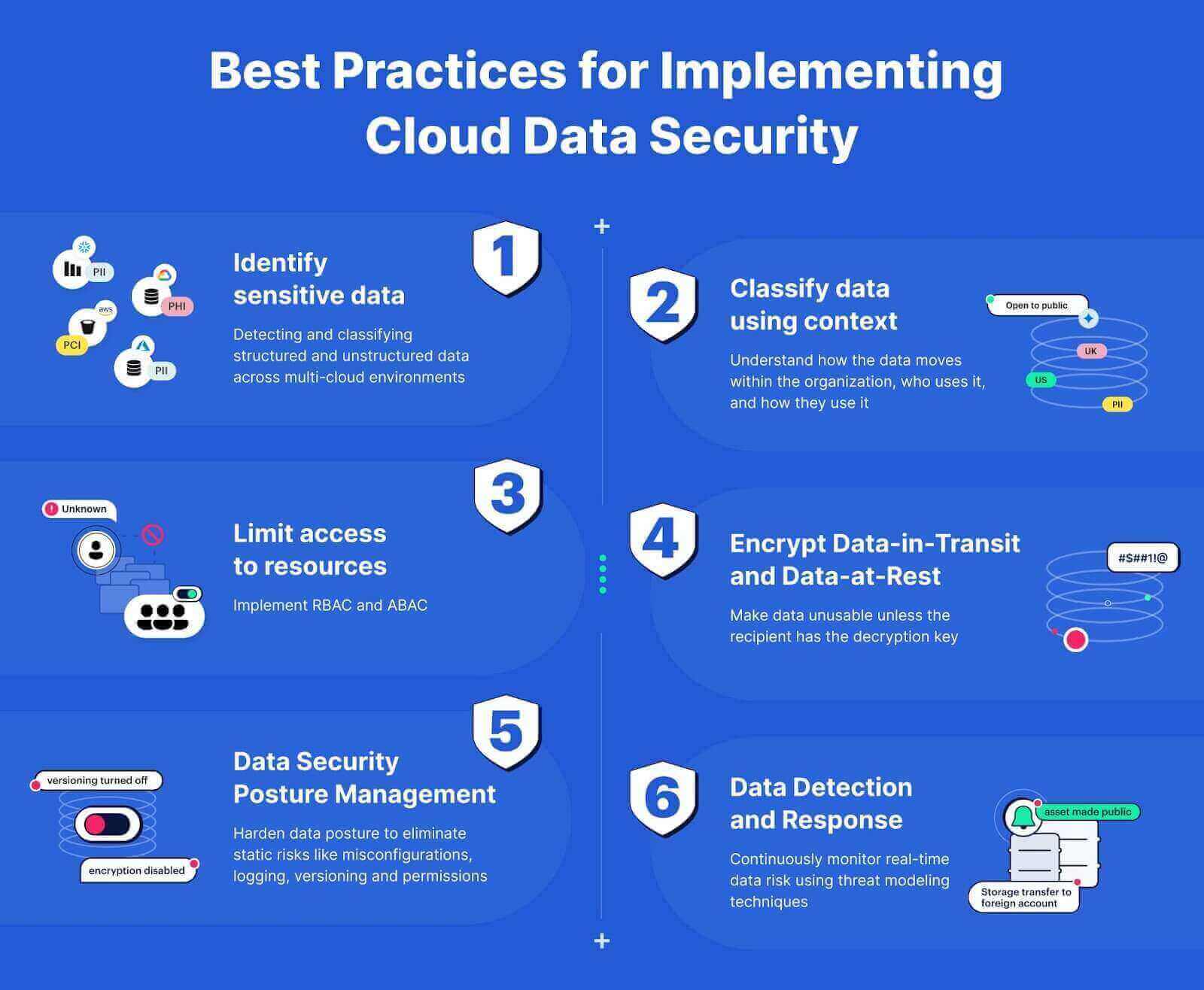
Security and Privacy Considerations
Security Features in Cloud Storage
When it comes to cloud storage, security is a hot topic. Thankfully, many cloud providers implement robust security features to protect user data. For instance, encryption both during transfer and at rest prevents unauthorized access.
Other notable security measures include:
- Two-Factor Authentication (2FA): This adds an extra layer of security by requiring a second form of verification when accessing accounts.
- Regular Audits and Compliance Checks: Reputable providers are often compliant with industry standards like GDPR or HIPAA, ensuring a commitment to data protection.
Security Features in Traditional Storage
On the other hand, traditional storage offers a different set of security features. While users maintain physical control, the responsibility for security falls entirely on them. Some common practices include:
- Physical Locks and Safes: Ensuring that drives are securely stored can deter unauthorized access.
- Data Encryption: Encrypting files before storing them on external drives adds a layer of protection against data breaches.
Privacy Concerns in Cloud and Traditional Storage
Privacy remains a significant consideration in both storage methods. With cloud storage, users often worry about how their data is used and the potential for third-party access. Many cloud providers have unclear privacy policies, which can lead to apprehension about sharing sensitive information.
Conversely, traditional storage may seem safer, but it isn’t immune to risks like physical theft or data loss due to hardware failure. Balancing these considerations is critical for making informed decisions about your storage solutions.
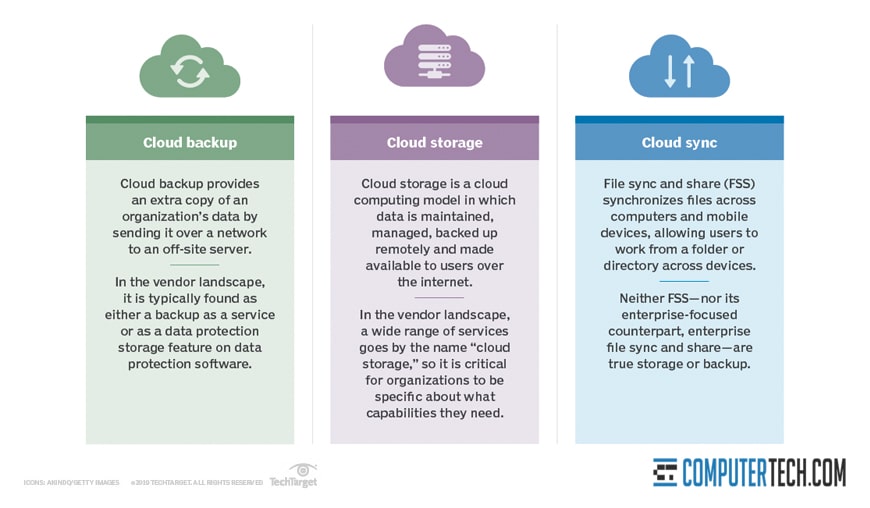
Cost Comparison
Cost Factors in Cloud Storage
When evaluating cloud storage, several cost factors come into play. Most cloud services operate on a subscription model, which might seem appealing at first glance. However, these costs can add up over time. Users often pay based on:
- Storage Capacity: The more data you need to store, the higher the monthly fee.
- Data Transfer Costs: Some providers may charge for data retrieval or excessive bandwidth usage.
- Additional Features: Features like advanced security or collaboration tools can increase costs.
Cost Factors in Traditional Storage
In contrast, traditional storage comes with its own set of cost factors. The initial investment can be larger, as users need to purchase hardware upfront. Key areas include:
- Hardware Costs: The price of external hard drives, USBs, or NAS systems.
- Maintenance Expenses: Potential costs for repairs, software updates, or replacements.
- Energy Use: Physical devices consume electricity, which can add to the overall expense.
Total Cost of Ownership Comparison
When comparing the total cost of ownership between cloud and traditional storage, it’s essential to consider the long-term implications. While cloud storage may seem economical due to its low initial costs, the cumulative expenses can surpass those of traditional storage over time.
In summary, the decision boils down to factors like usage patterns, data needs, and personal preferences. Understanding these costs ensures that individuals and businesses make budget-conscious choices that best suit their storage requirements.

Scalability and Accessibility
Scalability Features of Cloud Storage
One of the standout features of cloud storage is its inherent scalability. This means that as your storage needs evolve, you can easily adjust your capacity without a hassle. For example, many businesses find that they can start with a basic plan and expand as they grow. Key scalability features include:
- On-Demand Storage: Add or remove storage levels seamlessly, often in real-time.
- Flexible Plans: Choose from various subscription options tailored to different sizes of data needs.
- Custom Solutions: Some providers offer enterprise-level solutions that scale to hundreds of terabytes.
Accessibility Features of Cloud Storage
Accessibility is another advantage of cloud storage. Files can be accessed from virtually anywhere, at any time. This flexibility is invaluable for users who travel or work remotely. Noteworthy accessibility features include:
- Multi-Device Compatibility: Access your files from smartphones, tablets, or computers.
- Shared Links and Permissions: Easily share files with others while controlling access levels.
- Offline Access: Some services enable offline work, syncing files when reconnected.
Scalability and Accessibility in Traditional Storage
In contrast, traditional storage solutions face limitations in scalability and accessibility. Expanding a traditional setup often requires purchasing new hardware, which can be cumbersome and costly. Accessibility, on the other hand, is typically confined to specific devices or locations, affecting collaboration capabilities.
While traditional storage can offer reliable performance, the agility and flexibility of cloud solutions often make them a more appealing option for individuals and businesses looking to adapt quickly to changing needs.

Industry Applications
Use of Cloud Storage in Various Industries
Cloud storage has found its way into numerous industries, revolutionizing how organizations manage data. For instance, in the healthcare sector, medical records can be securely stored and accessed by healthcare professionals instantaneously, leading to better patient care. Other industries benefiting from cloud storage include:
- Finance: Banks can store and analyze massive datasets securely while ensuring compliance with regulations.
- Media and Entertainment: Professionals use cloud services to store large media files and facilitate collaboration between remote teams.
- Education: Schools leverage cloud storage for sharing educational resources with students and faculty.
Use of Traditional Storage in Various Industries
On the other hand, traditional storage still plays an essential role, particularly in industries with stringent compliance and security regulations. For example:
- Manufacturing: Companies often store sensitive data on local servers to minimize risks of breaches.
- Legal Firms: Cases with confidential documents may prefer physical storage, ensuring complete control over sensitive information.
- Retail: Local inventory management systems often rely on traditional storage for monitoring stock levels and sales data.
Understanding the specific applications of each storage method can help organizations choose the best solution to meet their unique industry needs.
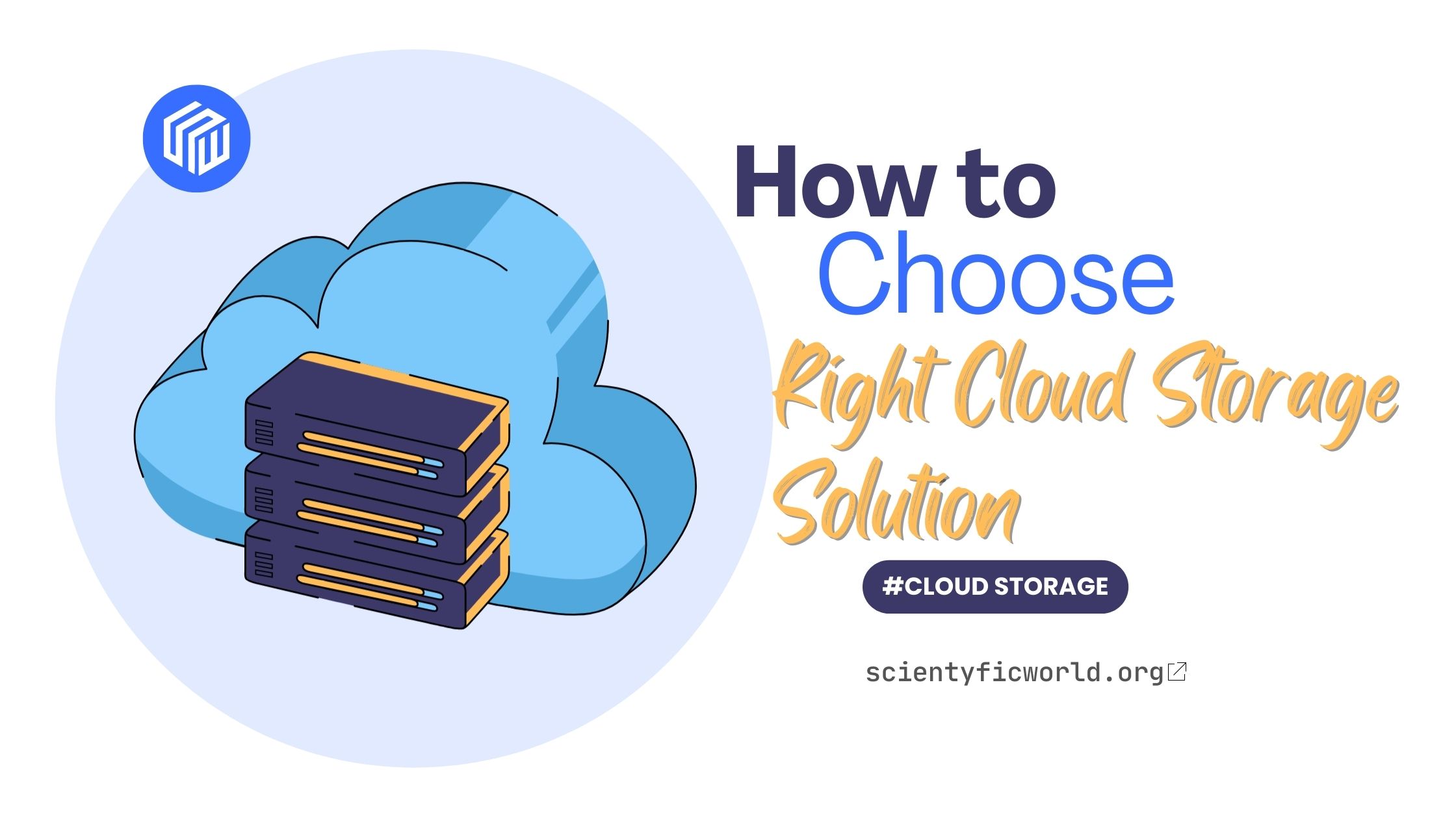
Choosing the Right Storage Solution
Factors to Consider when Choosing between Cloud and Traditional Storage
Selecting the right storage solution is crucial for optimizing data management. Several factors should be considered when weighing cloud and traditional options. First, evaluate your storage needs—how much data do you need to store now and in the foreseeable future? Additionally, assess your budget.
Consider the following factors:
- Security Requirements: Are you dealing with sensitive data that requires strict compliance?
- Accessibility Needs: How often do you need to access the data remotely?
- Scalability: Will your storage solution need to grow with your organization?
Best Practices for Implementation
Once you’ve made your choice, implementing best practices is essential for a smooth transition. For cloud storage:
- Data Migration Planning: Create a detailed plan for migrating data to avoid loss or downtime.
- User Training: Educating your team on best practices and security measures will maximize efficiency.
For traditional storage:
- Regular Backups: Ensure that data is routinely backed up to prevent loss in case of hardware failure.
- Physical Security: Establish a secure location for hardware to minimize theft and damage.
By thoughtfully considering these factors and following best practices, organizations can choose and implement a storage solution that perfectly fits their unique needs.
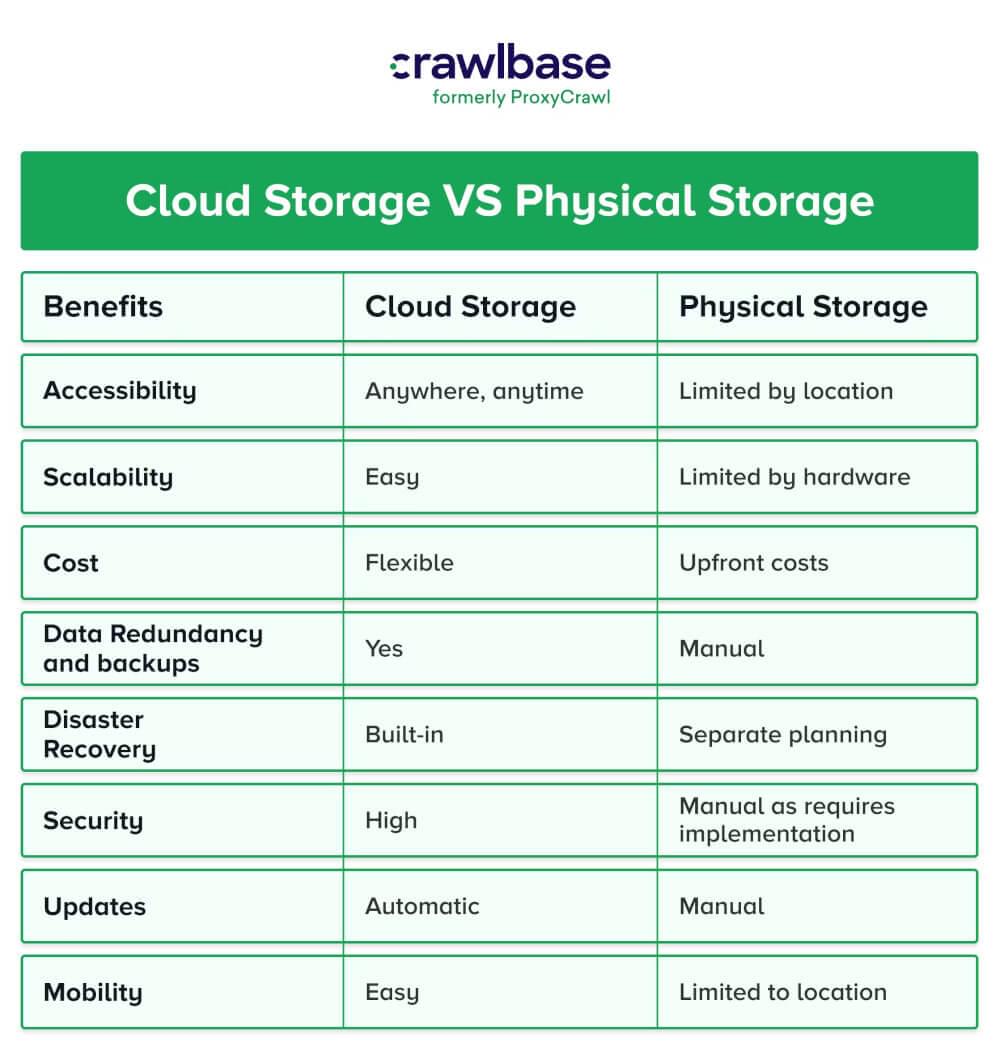
Future Trends in Storage Solutions
Emerging Technologies in Cloud Storage
As we look ahead, cloud storage technology is evolving rapidly, introducing innovative solutions that enhance performance and security. One exciting trend is the rise of edge computing, which processes data closer to the source. This reduces latency and improves response times, especially beneficial for applications like IoT devices.
Other emerging technologies include:
- Artificial Intelligence (AI): AI algorithms are being used for more efficient data management and predictive analytics, which can help organizations optimize storage use.
- Decentralized Storage Solutions: Technologies such as blockchain are being explored for secure, distributed data storage.
Evolution of Traditional Storage Systems
Conversely, traditional storage systems are also undergoing significant evolution. With advancements in technology, we are witnessing increased capacity and performance in HDDs and SSDs. These devices are not only getting faster but also becoming more efficient in data retrieval.
Furthermore, traditional storage solutions are incorporating hybrid models that combine localized storage with cloud capabilities. This blend allows organizations to enjoy the benefits of both worlds by offering improved access, control, and cost-effectiveness.
As storage solutions continue to evolve, organizations must stay informed to leverage these advancements effectively, ensuring their infrastructure remains robust and future-ready.
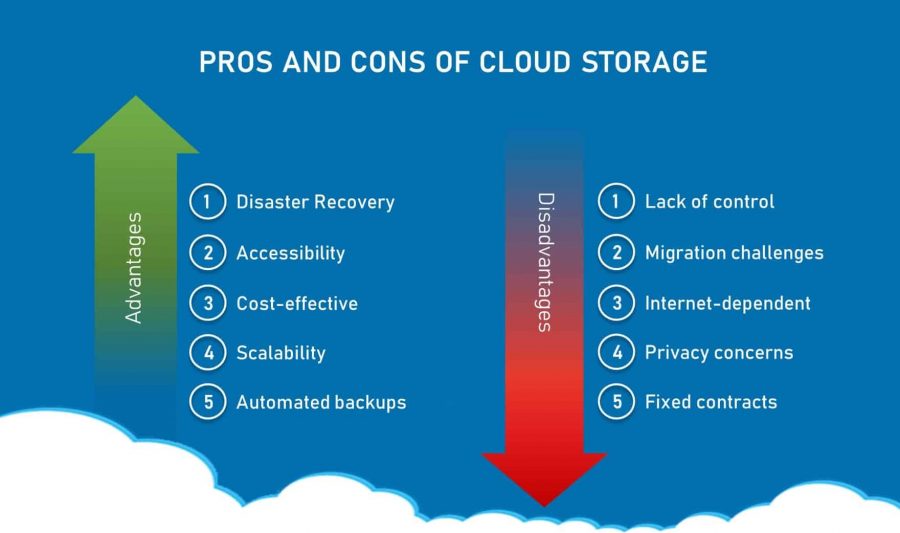
Conclusion
Recap of Key Points
In today’s data-driven world, understanding the differences between cloud and traditional storage solutions is vital. We’ve explored how cloud storage offers unmatched scalability and accessibility, making it ideal for businesses and individuals with dynamic data needs. On the flip side, traditional storage provides direct control and security for sensitive information, which some organizations still prefer.
To recap the key points:
- Cloud Storage: Flexible, scalable, and cost-effective for remote access.
- Traditional Storage: Secure and tangible, suitable for strict compliance requirements.
Final Considerations
As you consider your storage options, take the time to evaluate your specific needs, future growth, and budget. It’s essential to choose a solution that aligns with your operational goals. Furthermore, don’t overlook the importance of security and best practices in whichever method you opt for.
In this fast-evolving tech landscape, remaining educated on storage trends will ensure you harness the best capabilities available, maintaining efficiency and security in your data management strategy. By making informed choices today, you’re setting your organization up for success tomorrow.

